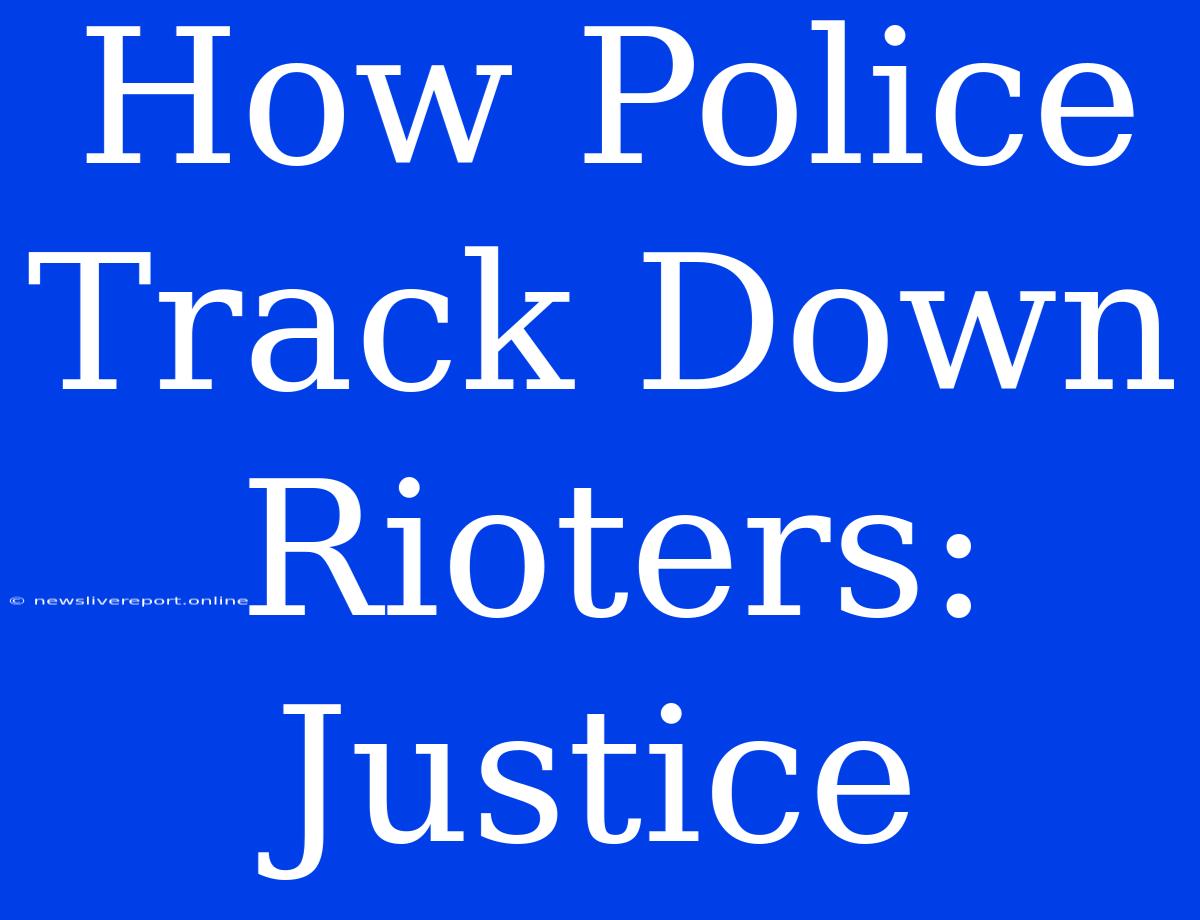How Police Track Down Rioters: Justice or Overreach?
The recent surge in riots and protests has brought into sharp focus the methods used by law enforcement to identify and apprehend those involved. While the pursuit of justice for crimes committed during these events is crucial, the tools and tactics employed raise important questions about privacy, due process, and the potential for abuse. This article examines the methods used by police to track down rioters, exploring the ethical and legal considerations surrounding these practices.
The Tools of the Trade:
Law enforcement agencies utilize a range of tools and techniques to identify and apprehend rioters, including:
1. Surveillance Footage:
H2: CCTV, Bodycams, and Drones
Security cameras, body-worn cameras, and drones equipped with high-resolution cameras play a significant role in capturing footage of individuals participating in riots. These recordings can be crucial for identifying suspects and reconstructing events.
2. Social Media Analysis:
H2: Tracking Hashtags and Online Activity
Social media platforms have become battlegrounds for organizing protests and documenting events. Law enforcement agencies monitor these platforms, analyzing hashtags, posts, and user activity to identify potential suspects, assess the scale and location of protests, and gain insight into the motivations behind them.
3. Facial Recognition Technology:
H2: A Powerful but Controversial Tool
Facial recognition software can analyze images and video footage to identify individuals in real-time or retrospectively. While this technology can be effective in identifying suspects, it raises concerns about privacy violations and the potential for inaccurate or biased identification.
4. Open-Source Intelligence (OSINT):
H2: Mining Publicly Available Data
Law enforcement agencies leverage publicly available data from websites, social media, and other sources to gather information about potential suspects. This can include identifying individuals' names, addresses, and affiliations.
Ethical and Legal Considerations:
The use of these tools and techniques raises several important ethical and legal considerations:
1. Privacy Concerns:
H2: Balancing Security and Individual Freedom
Surveillance footage, social media monitoring, and facial recognition technology raise serious concerns about privacy violations. The collection and analysis of personal data without consent can have significant implications for individual freedom and autonomy.
2. Due Process Rights:
H2: Ensuring Fair Trials and Protections
The use of these tools must be balanced with the right to due process. Accusations based on circumstantial evidence or potentially biased facial recognition technology should be subject to rigorous scrutiny and verification.
3. Potential for Misuse and Bias:
H2: Guarding Against Discriminatory Practices
The use of these tools can be susceptible to misuse and bias. Law enforcement agencies must ensure that these technologies are used fairly and responsibly, without targeting individuals based on race, religion, or political affiliation.
The Importance of Transparency and Accountability:
To mitigate the potential risks associated with these tools, it is crucial for law enforcement agencies to be transparent about their use and to establish robust mechanisms for accountability. Public oversight, clear guidelines, and independent audits can help to ensure that these technologies are used responsibly and ethically.
Conclusion:
The use of technology in tracking down rioters is a complex issue with far-reaching implications. While these tools can play a valuable role in maintaining order and bringing justice to those who break the law, their use must be carefully considered and balanced with the fundamental rights and freedoms of all citizens. Open dialogue and debate are essential to ensure that the use of these technologies remains ethical, responsible, and accountable.

